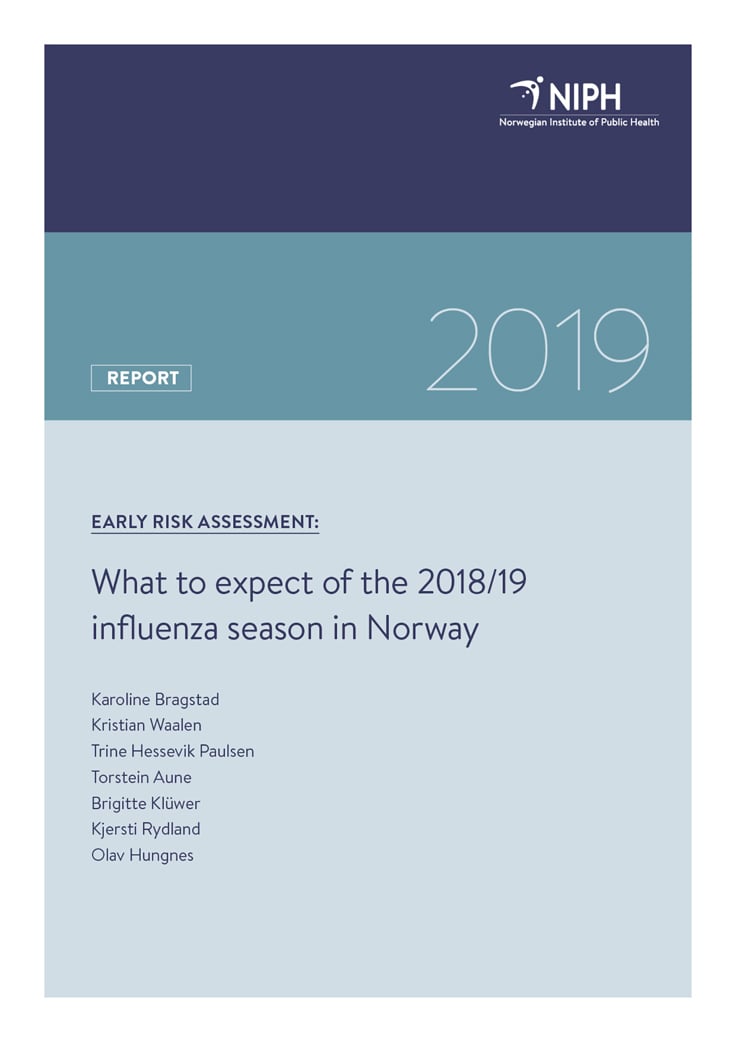Early risk assessment: What to expect of the 2018/19 influenza season in Norway
Report
|Published
This brief report presents the assessment by the Norwegian Institute of Public Health(NIPH) on the influenza situation early in the 2018/2019 season, and possible characteristics of the upcoming influenza outbreak in Norway.
Key message
Summary early observations and prospects for the 2017/18 season
- Influenza viruses are on the increase in Norway, but still at a low level as the Christmas/New Year holidays are approaching.
- Comparing with historical data, the weekly developments of clinical and laboratory verified influenza is following a course that in previous years have led to outbreaks peaking in late February or March.
- Influenza A(H1N1) viruses are becoming increasingly predominant. Influenza B viruses are unusually rare.
- Seroepidemiology data from August 2018 indicate that immunity in Norway against circulating influenza A(H1N1) and A(H3N2) viruses is quite strong. Also for the B/Yamagata-lineage virus that caused last winter’s influenza outbreak, there was a marked increase in people with antibody at protective levels.
- Added to this comes the immunity due to the subsequent influenza vaccination campaign in the autumn. Rates of vaccination were raised considerably this year.
- The A(H1N1) viruses are clade 6B.1 A/Michigan/45/2015 and group together with the A/Switzerland/3330/2017 reference strain, but with the additional substitutions N129D, S185I and N260D in the haemagglutinin HA1 subunit.
- We have at this point no indication that these changes in the HA1 cause significant antigenic drift from the vaccine strain and recently circulating A(H1N1) viruses 1.
- Provided that there is no significant antigenic drift, and given that immunity against the A(H1N1) virus is strong, there is a good possibility that population immunity will limit the extent of the developing influenza outbreak.
- Nonetheless, experience from previous seasons indicate that outbreaks with A(H1N1) viruses that emerged with the 2009 pandemic in some instances cause severe disease that requires intensive care among the non-elderly.
While the great majority of cases are mild, and the upcoming outbreak may possibly be of limited extent, such severe cases must be expected also this season. - No resistant viruses have been found among the 74 influenza viruses hitherto tested for susceptibility to antiviral drugs.


